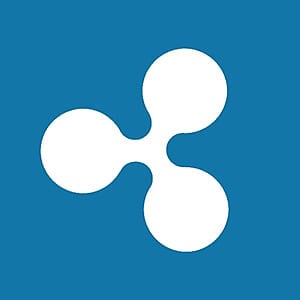[ad_1]
The growth of the decentralized finance (DeFi) sector has been a recurrent headline throughout 2021 and to date, hundreds of billions of dollars in crypto assets are locked on protocols across numerous blockchain networks and earning a yield for their holders.
What started off as a simple Ethereum-based swap interface that allowed ERC-20 tokens to be exchanged in a decentralized manner, called Uniswap, has exploded into a vast ecosystem full of decentralized exchanges, yield farms, lending protocols and staking platforms.
As development continues and older protocols become more established, newer projects have emerged to incorporate more pieces from the traditional financial realm into the DeFi arena as digital technology slowly transforms the global financial system.
Here’s a look at some ways for users to get involved with DeFi outside of simply staking in liquidity pools or depositing to a lending protocol.
Decentralized derivatives trading
Cryptocurrency derivatives exchanges have long been a target for regulators, and once defiant exchanges like BitMEX and Binance have found themselves bending to the will of the law and modifying their operating practices as they seek a more legitimate standing.
This has furthered the necessity for crypto traders to have a decentralized option and led to the creation of protocols like dYdX and Hegic, which offer similar services without the target that is a centralized structure for regulators to come after.
DYdX is a non-custodial perpetuals trading platform built on a layer-two protocol that operates on the Ethereum network and offers users access to up to ten times leverage on futures contracts for more than twenty cryptocurrencies.
Hegic is an on-chain options trading protocol that utilizes hedge contracts and liquidity pools to offer options contracts that last up to 90 days and can payout in Ether (ETH), Wrapped Bitcoin (WBTC) or USD Coin (USDC).
The maximum period of holding options on Hegic has been lowered from 90 to 30 days . All previously acquired options are not affected by this change.
The max. period will be adjusted based on the current volatility in order to protect active LPs from selling vol too cheap. pic.twitter.com/JiVBVH5xD2
— Hegic (@HegicOptions) September 8, 2021
Both of these platforms offer users access to these advanced trading products without the need to divulge their identities, as is required on the centralized counterparts.
Bonding, rebase and ultra-high APY tokens
One topic that is increasingly popping up more in financial discussions is the concept of how to create a decentralized reserve currency that is free of the control of any government or centralized financial institution.
Olympus aims to address this issue through a decentralized autonomous organization (DAO) platform which offers staking and various bond offerings including the ability to bond Ether, MakerDAO (DAI), Liquidity USD (LUSD) and Frax (FRAX).
We just launched our third reserve bond, $LUSD! Welcome @LiquityProtocol to the Olympus Treasury. pic.twitter.com/34IKpTFG5l
— OlympusDAO (@OlympusDAO) September 22, 2021
The bonding process on Olympus is basically a cross between a fixed income product, a futures contract and an option. Bonders are provided with a quote outlining terms for a trade at a future date and include a predetermined amount of the protocol’s native OHM token that the bonder will receive once the vesting period is complete.
Funds that are raised by bond offerings go into the Olympus treasury as collateral to back the OHM tokens that were minted, helping to provide the underlying value behind the OHM token which allows it to be used as a reserve currency or medium of exchange.
The only other projects that have a treasury that provides the underlying value for each token are stablecoins, but as the name implies their price is fixed whereas the price of OHM can increase, offering a new avenue of yield for users.
Once bonding is complete, users can sell their OHM on the open market or stake them on the Olympus protocol for a current yield of 7,299%.
Related: CFTC renewed: What Biden’s new agency picks hold for crypto regulation
Crowd loan participation on Polkadot and Kusama
Another way crypto holders can put their assets to work while also helping the cryptocurrency ecosystem expand is through participating in the parachain auctions in the Polkadot and Kusama ecosystems through a process known as a crowd loan.
In the auction process, different projects vie for one of the limited parachain slots that connect the project directly to the main Kusma or Polkadot network, facilitating the interconnection of all parachains in the ecosystem.
With crowdloans, users who hold the native KSM and DOT tokens can “contribute” them towards the pool that a project uses to secure a parachain slot, and they will have their tokens returned after a specified lock-up or bonding period that can last for up to one year.
Current #Kusama crowdloan stats:
☛ ~995k $KSM contributed to 16 projects
☛ ~88% (~875k $KSM) contributed to the 5 leading projects which means ~175k $KSM in average so far.
☛ This 88% equals ~78% of KSM contributed to the first 5 parachains.These auctions are a huge success!
— Fabs (@fabsbags) September 21, 2021
In exchange for their contribution and inability to earn staking rewards for the period that the tokens are locked up, users receive a specified number of tokens for the new protocol which can then be used in the ecosystem or sold on the market.
This approach offers a less risky yield opportunity for token holders, as all principal contributions are locked in a smart contract and returned after the stipulated lock-up period. And by the nature of the parachain auction process, there have been well-developed projects with larger communities that have secured parachain slots, increasing the chance that their tokens will maintain or increase in value as long development for the protocols stays active.
Aside from the threat of regulation, the DeFi ecosystem is showing few signs of slowing its integration of the best parts of the traditional financial system and developing innovative protocols that level the playing field for retail investors.
Want more information about trading and investing in crypto markets?
The views and opinions expressed here are solely those of the author and do not necessarily reflect the views of Cointelegraph.com. Every investment and trading move involves risk, you should conduct your own research when making a decision.
[ad_2]


